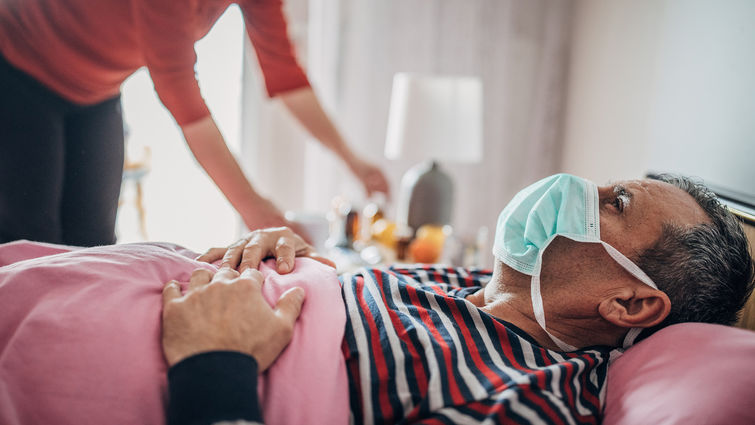
COVID-19 can quickly spread through busy family households, shared living spaces and homes with close quarters if proper precautions are not taken. Of even greater concern, if you or someone you live with have underlying health conditions or are immunocompromised, they are at increased risk for severe illness from the virus.
Household transmission of COVID-19 is common and occurs early after illness onset. In fact, those with coronavirus tend to infect about 50% of a household, according to a study published in November by the Centers for Disease Control and Prevention.
Internal medicine specialist, Adrian Cotton, MD, chief of medical operations at Loma Linda University Health, says if a household includes vulnerable individuals, then all family members should act is if they themselves are at high-risk for contracting the virus.
In order to protect those most at risk, Cotton says it is crucial to take these steps to avoid virus spread when someone in your household gets COVID-19.
Exactly what to do
- Separate the sick household member. If someone in your family has symptoms of COVID-19 or has tested positive for the virus, separate them from the rest of the household by providing them with their own bedroom and bathroom with working doors that remain closed. “The infected individual should not be around others until it has been 10 days since symptoms first appeared,” Cotton says. “They would also need to go 24 hours with no fever, without the use of fever-reducing medications.”
- Identify a caregiver. If possible, identify one person in the household who is not at a higher risk for severe illness to provide necessary care to someone who is sick. “To minimize spreading virus in the air, the sick should wear a mask when they will be near other family members or caretakers,” Cotton says.
- Deliver food and water; place outside of closed door — Cotton suggests using disposable dinnerware and including a large paper bag with the food to enable the sick to cover used utensils to help contain virus particles. Plates and silverware can be used as long as they are washed in hot soapy water for at least 20 seconds after use. “If you must enter the room, limit your time with the sick, wash your hands before and after leaving the room, making sure not to touch your face,” Cotton says.
- Minimize contact with others in the household — Caregivers should maintain six feet of distance, wear a mask and wash hands often when among others in household. They should not prepare food for other healthy family members and should dine separately.
- Stay on top of medications — Cotton says most importantly to make sure the immunocompromised in your household are staying on top of any medications that keep their immune system strong during this time.
- Consult a doctor — He also recommends the patient consult with their primary care physician because their clinical severity of COVID-19 risk can vary.
- Limit errands. Select one or two family members, not at higher risk, to run errands such as grocery shopping. When you return, wash hands and disinfect counters, sink handles and doorknobs after putting away groceries. Cotton says it’s preferable to use online pre-order, delivery or curbside pickup for essential items.
- Don’t share personal items. The infected person should use separate hand towels, dishes and personal care items such as toothpaste and brushes.
What if I must share common living spaces?
Cotton suggests the following guidelines, in accordance with CDC recommendations, to help mitigate exposure to the ill when living in shared quarters.
Sharing a bedroom:
- Make sure the room has good airflow by opening an outside window.
- Place beds at least six feet apart.
- Sleep head to toe.
- Divide the space — hang a curtain or quilt, put up a room divider or large piece of cardboard to separate the ill person’s bed.
Sharing a bathroom:
- The person who is sick should clean and disinfect commonly touched bathroom surfaces after each use.
- Flush toilets with the lid closed.
- If the sick are too ill to clean, the caregiver should wait as long as possible before entering to disinfect or to use the bathroom.
- Open outside windows and use ventilation fans before entering.
For the most up-to-date information about coronavirus, visit Loma Linda University Health’s COVID-19 website.
